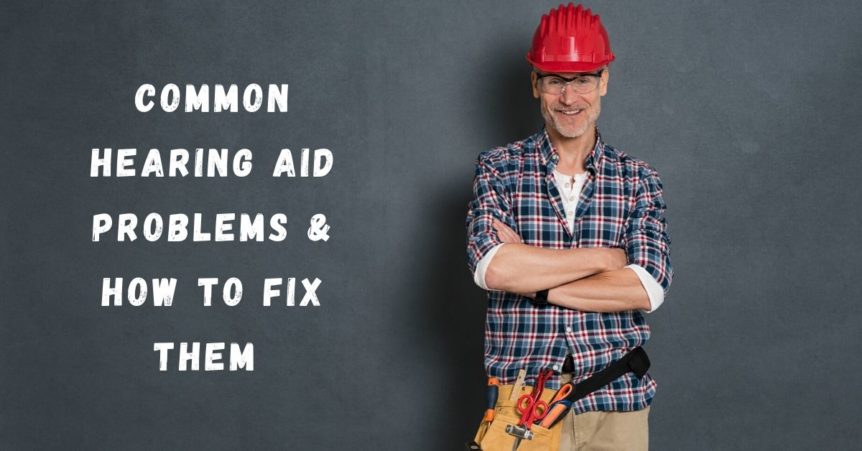Hearing aids are remarkably effective devices that have helped millions of people communicate more easily and enjoy the world in ways they didn’t think possible. Even though these devices have become crucial to so many people with hearing loss, they do require some upkeep and attention to remain functional. The good news is that the majority of hearing aid models require very little intervention, and simple battery care and gentle cleaning with a clean, dry, soft cloth will keep them going without much attention. However, if problems arise there are some simple steps you can take to get them back in working order. The crucial decision you will need to make is at what point your abilities to fix the aids stop and where you must go to your hearing healthcare provider for assistance. Let’s consider a few ways that your aids might not be working properly and some simple troubleshooting ideas to get them back in working order. If you reach the end of this basic list of solutions, then the time has come to give your hearing healthcare provider a call. Sometimes the fix is something simple you can do at home. Other problems require a return visit to the office where they can complete a repair “in house.” In more advanced situations, you may need to return the aids to a licensed repair center or the manufacturer to get them back in tip top shape.
What should I do if my hearing aids are whistling?
One of the simplest fixes for your hearing aids is often to solve a “whistling” or feedback problem. This sound occurs when some devices are improperly translating sound from the microphone into amplified sound in your ears. First, wipe your aids with a clean, dry, soft cloth; it is possible debris obstructed the microphone on your hearing aids. The next step will be to try re-inserting your hearing aids into your ears. If there is an improper fit in the ear canal for some models, they can have a feedback issue. Finally, try lowering the volume on your hearing aids and then slowly returning the volume to the appropriate level. If none of these steps is successful to stop the whistling, then you will need to call your hearing healthcare provider for assistance.
What should I do if I hear a distorted or buzzing sound?
After completing a basic cleaning with a clean, dry, soft cloth, take a close look at your hearing aids. Is there any damage that you can hear? Some hearing aids develop distortion due to corrosion in the power supply. If your aids have removable batteries, try taking them out and inspect for corrosion. If you see any problem, try replacing the battery. If the battery itself is in good shape, then look closely at the contacts that link the battery to the units. You may want to open and close the battery door a few times, in essence moving the battery around in ways that will scrape the corrosion and adjust the battery position. If there is visible corrosion, contact your hearing healthcare provider for further solutions to clear the power supply path.
What if my hearing aids don’t work at all?
In the worst case, your hearing aids might be completely out of service. After checking to make sure your battery is charged or replaced with a functional one, make sure the door to the battery chamber is completely closed. If the door bounces open, then the battery will not be pushed properly into place. Hearing aids with a variety of programs or memory settings can be reset in the Smartphone app in some cases, so check that setting to make sure it is working as it should. Finally, make sure there is not debris or earwax impeding any of the connections or amplification. Of course, make sure the units are turned on and the volume is turned up to a reasonable level.
Need more help? Feel free to contact us. Our team will walk you through some of these same steps and then guide you through more advanced considerations.

